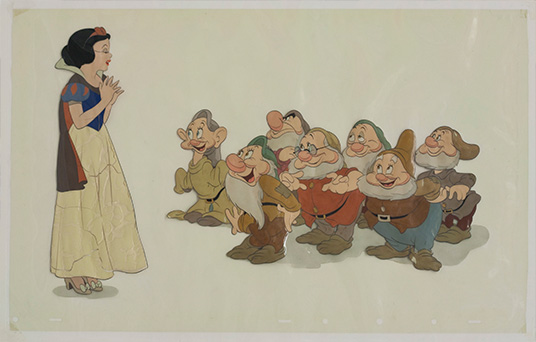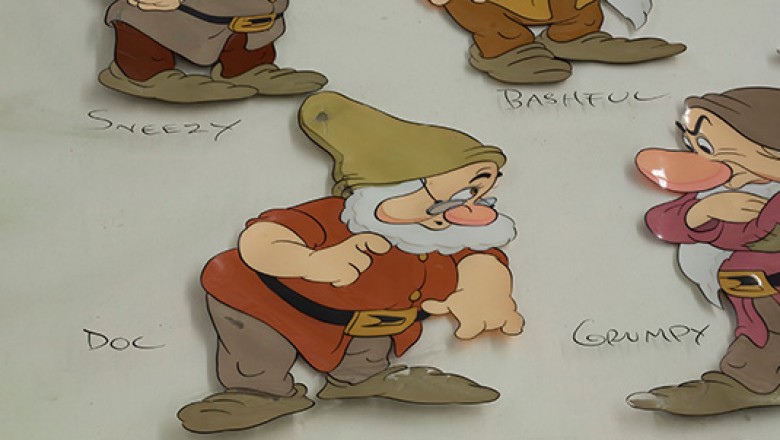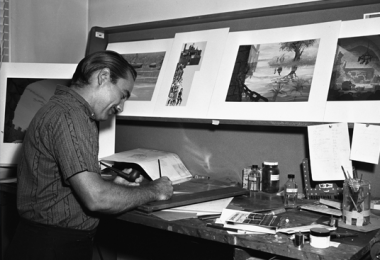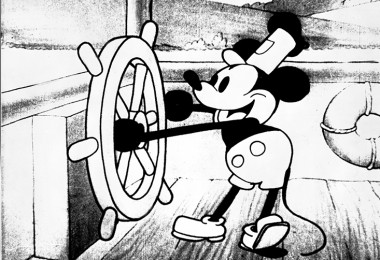Anticipation was high for the 1862 Great International Exhibition in London.
As the opening day approached, over 28,000 exhibitors representing over thirty-five countries—from China, Japan, and Australia, to Canada, Madagascar, and Jamaica—began to stream into South Kensington on the site where today sits the Natural History Museum and the Science Museum. They were there to show off the latest developments in the fields of industry, technology, and the arts. Among them was Alexander Parkes, a British inventor from Birmingham who created the first man-made plastic, a thermoplastic polymer called Parkesine. One might imagine how the public’s curiosity must have been piqued by this material that, once heated, could be easily manipulated into a variety of shapes that would set as it cooled.
By the mid-twentieth century, industrial manufacturers such as Dow Chemical were producing a variety of plastics, and many artists and designers were using different types of plastic to create furniture, sculptures, and other design objects. Inexpensive, lightweight, colorful, and easy to shape, plastics enabled them to push beyond the limitations of other traditional materials.
“Cellulose nitrate and cellulose acetate were two early plastics that sculptors loved,” explained Michael Schilling, senior scientist at the Getty Conservation Institute (GCI).
“They were among the first plastics readily available to artists. Although they looked like glass, sculptors could warm them, bend them, paint them, do all kinds of things to them and they wouldn’t shatter like glass. In the 1930s and 1940s, artists like Naum Gabo and Antoine Pevsner used them and were able to show off a whole new range of expression in three dimensions.”
“These two plastics start with cellulose, a natural product that comes from trees and cotton,” explained Schilling. “Manufacturers react cellulose with nitric acid (in the case of cellulose nitrate) or acetic acid (in the case of cellulose acetate) to make a hard colorless polymer. By mixing in chemicals called plasticizers, they create flexible plastics that can be molded and fashioned into objects.”

Unfortunately, some plastics—including cellulose nitrate and cellulose acetate—don’t have the long life spans once anticipated. Many objects made from these plastics are showing serious signs of deterioration that can appear with little or no warning.
Cellulose nitrate is not only extremely flammable, but also produces highly corrosive nitric acid as it degrades. Early motion picture films were made from cellulose nitrate. Over time, as the film degraded, the nitric acid would not only destroy the film but also eat through the metal canister in which the film was stored.
So the plastics industry replaced it with cellulose acetate, a less flammable plastic. Unfortunately, cellulose acetate slowly degrades over time, ultimately reverting back to cellulose and acetic acid, a chemical found in vinegar. That is why film archivists call this degradation process Vinegar Syndrome.
Typically, as plastic objects degrade, they may begin to lose their shape and become warped, rippled, and discolored. Plasticizers can move to the surface of the object, creating sticky residues. Eventually, what remains of the object may bear little resemblance to the original design.

“Finding ways to preserve plastic objects requires scientists and conservators to work together. Identifying the types of plastic from which works of art were created and determining appropriate conservation methods are growing challenges for museums,” said Schilling.
So in early 2010, the GCI began a collaboration with the Disney Animation Research Library (ARL) to improve the understanding of plastics in their collection—plastics that were also extensively used for modern sculptures and design art objects. This joint effort ispart of the GCI’s long-term Preservation of Plastics project, a key component of the Institute’s Modern and Contemporary Art Research initiative, which engages in a range of scientific research to analyze materials in modern and contemporary art, assess their stability, investigate methods to improve knowledge of the effects of conservation treatments, and find technical solutions for decreasing the rates of deterioration.
The ARL is the world’s largest archive of animation, housing approximately 65 million pieces of animation art created over a period of more than 80 years by Walt Disney Animation Studios. The expansive collection includes not only conceptual design work, animation drawings, model sheets, background paintings, layouts, exposure sheets, models, audiotapes and videotapes, reference photographs, and books, but also original plastic animation cels. Initially, the animation cels were of greatest interest to GCI scientists.
While the ARL’s state-of-the-art storage facilities have extended the life of these materials, the exact aging process depends on a number of factors, including the composition of the plastics. A number of cels in the archive are already showing the typical signs of cellulose plastic deterioration, such as yellowing, warping, and cracking, as well as the visible pulling away of paint from the plastic support.
The GCI and ARL have been studying this collection together to better understand the changes that occur in these materials over time and to learn more about the possible causes of these changes, with the ultimate aim of improving ways of preserving not only the Walt Disney Company’s animation cels, but also cels in other collections.

Through their chemical analysis research, GCI scientists were able to identify what type of plastic each cel was made from, what kind of plasticizers were used to make the cel, and how much the cel had discolored. With that information, they could identify which of the cels were more unstable and fragile. In addition, by measuring how much acetate was still present, they were able to determine how much degradation had already occurred. All of this information enables the ARL to ensure that each cel is being stored in the ideal climate conditions, as this varies from plastic to plastic. But it also allows GCI scientists to extrapolate the information gleaned from the Disney research and apply it to sculptures, furniture, and other objects made from cellulose acetate and cellulose nitrate.
“One of the most important needs for any of our scientific research projects is reference samples. That’s true whether we’re studying paints, paper, metals, canvas, lacquers, or plastics,” said Schilling. “We use these samples in tests to identify and characterize the materials, see how they change with age, with light exposure, or with temperature and humidity extremes. They’re vital. But if you want to study cellulose nitrate or cellulose acetate sculptures of Gabo or Pevsner, where do you get reference plastics made in that era? You’d really be hard-pressed to find them.” The ARL animation cel collection provided a unique and invaluable source of historic cellulose nitrate and cellulose acetate for studies such as this.
“Our collaboration with the ARL has been terrific,” commented Schilling. “They’ve been incredibly generous in providing us not only with cel samples and reference materials, but also in giving us access to their extensive archives where we discovered gems of information, such as memos from the 1930s to plastics manufacturers outlining how the products were, or were not, working, and the changes they’d like to see the manufacturer make. The information is simply invaluable for our work. We look forward to a long and mutually beneficial relationship with them.”
This Disney Animation Research Library partnership builds on research findings that grow out of the GCI’s participation in POPART, a project initiated by a consortium of European research laboratories with the objective of improving conservation and maintenance of plastic objects in museum collections. The GCI’s continuing research into the conservation issues of plastic objects is designed to ultimately increase the treatment options available to conservators dealing with the escalating number of plastic objects in collections now showing signs of deterioration.






